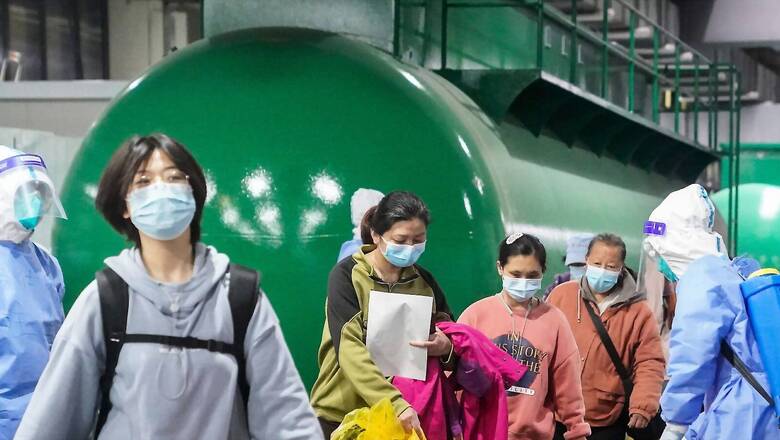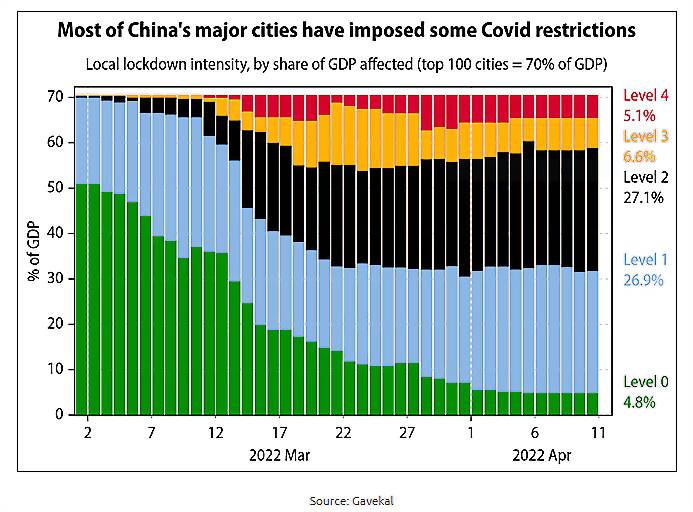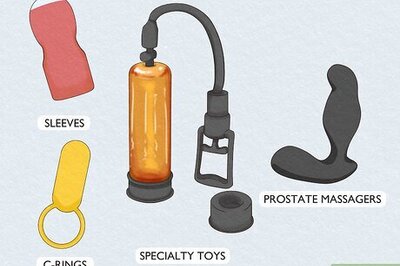
views
China seems to be on tenterhooks with more than 70 of its top cities either under partial or complete lockdown due to the pandemic since the beginning of March. Amongst them Shanghai — China’s most populous city — that is under lockdown since March-end is under global spotlight.
Importance of Shanghai
This is not any ordinary city, but China’s financial capital and manufacturing powerhouse. Its 25 million residents are amongst the richest in the country. According to statistics released by the National Bureau of Statistics, the city’s per capita disposable income in 2021 stood at 40,357 yuan (US $6,219), which is the highest in China. Shanghai’s boasts of the world’s busiest cargo terminal. It has contributed over 3 per cent of China’s GDP and makes up over 10 per cent of China’s total trade since 2018.
Besides, the city has a historic significance as the birthplace of the Chinese Communist Party (CCP) more than a century ago. This is reflected in the importance attached to containing the outbreak. China’s army medical corps was dispatched to assist the beleaguered local administration. Not just that, the CCP trotted out high-ranking Vice Premier Sun Chunlan to pay a visit to the city, following which the city’s exhibition centres became temporary sickbays.
ALSO READ | As ‘Stealth Omicron’ Wreaks Havoc in China, Hong Kong, Zero-COVID Policy Fails the Test
Policy Matters
The nature of CCP’s policy-making apparatus played a part in how it shaped the strategy to tackle coronavirus. In his book ‘Red Swan: How Unorthodox Policymaking Facilitated China’s Rise’, author Sebastian Heilmann writes that the CCP has always experimented with new initiatives in smaller areas before rolling it out in a province or even nationally. China’s response to outbreaks has been twin-pronged: Shuttering down urban centres and testing the local population en masse. With these in place, the administration tries to home in on and isolate COVID-positive patients, thus hoping to break the infection chain. The evolution of this response can be traced to the coronavirus outbreak in Wuhan in 2019-2020.
Serious missteps characterised Beijing’s response to the outbreak in 2019. The CCP failed to contain the spread of the virus at the epicentre, not just that, it used state machinery to persecute the whistle-blower, Dr Li Wenliang. Following which the CCP adopted a stringent zero-coronavirus policy since it helped turn the tide in Wuhan. The CCP elite perhaps thought that since the strategy worked in Wuhan, it would work elsewhere too.
However, the CCP failed to account for human element. In the early days of the pandemic, a frightened population overawed by the black swan event had a higher social acceptance of the strict pandemic-control measures. But it seems patience is wearing thin. Leaked footage on social media of children being snatched from their parents, residents wailing from high-rises against the curbs, and viral videos of poor quality of state-supplied rations are a challenge to the CCP, which prizes social stability above everything else. The China of 2022 is not the China of 2019. Chinese state media reported on April 14 that it was cracking down on individuals spreading rumours via social media.
Propaganda as a Governance Tool
After the initial setback of coronavirus outbreak in Wuhan in 2019, the CCP put forth the narrative that the pandemic had been contained successfully in China by the second half of 2020 due to its superior governance model. To add to that, CCP general secretary was telling a domestic audience that “East is rising and West declining”, essentially juxtaposing China’s “successful” handling of the outbreak vis-à-vis the West’s faltering response.
In recent years, Xi’s alma mater — Tsinghua University — has been the incubator of the narrative that China is on the road to be a superpower. Xi used this “success” in buttressing claims that Chinese style “democracy” was better than the Western prototype, when China convened a parallel congregation in response to US President Joe Biden’s ‘Summit of Democracies’ in December 2021. Under the CCP’s notion of “authoritarian stability”, people are expected to forgo their rights in lieu of rapid economic development. The question for CCP to ponder over is when the going gets tough, how much pain would the community be willing to tolerate.
A lockdown for more than a month can shave off nearly 2.7 per cent from Shanghai’s aggregated real income. A joint research project by researchers from Zhejiang, Tsinghua universities, Princeton, and the Chinese University of Hong Kong found China’s strict pandemic response may cost nearly US $46 billion per month — nearly 3.1 per cent of GDP — in lost economic output. In its research of China’s top 100 cities by GDP, the research firm Gavekal found that the intensity of lockdown was increasing since 2022 (Refer Figure 1). China’s Premier Li Keqiang has warned of internal and external challenges to China’s economy.

However, despite China’s economy bleeding, Xi refuses to budge on China’s COVID strategy. Amidst this crisis, while on a trip to China’s southernmost province, Hainan, Xi reiterated that there would be no dilution of its strategy on the pandemic since it was for the “greater common good”. The steadfastness may be attributed to Xi’s style of administration in which he has dismantled the collective leadership system and concentrated power directly in his hands. In such a situation, any retreat may give a handle to his opponents ahead of the important Party Congress, which will decide China’s leadership line-up. Xi is expected to linger on at the helm with another five-year term.
ALSO READ | As Stealth Omicron Ravages Europe, China, What is Protecting Indians?
The consequences of the Shanghai debacle may reverberate beyond the megacity. First, it may affect Xi’s succession plan for the CCP. Recently, Hong Kong Chief Executive Carrie Lam announced her decision not to run for a second term. The buzz was that despite her loyalty towards Beijing, she was paying a price for mishandling the pandemic in the special administrative region, which witnessed high fatalities. Meanwhile, speculation was rife that CCP Secretary for Shanghai, Li Qiang, a key ally of Xi, was amongst the frontrunners for the post of Premier (No. 2 ranking in the CCP hierarchy). The situation in Shanghai may make that tough, since one rule for Lam and another for Li makes bad optics. China’s zero COVID has opened up another front in its confrontation with the US. America recently directed all non-emergency staff at its consulate in Shanghai to leave China, leading to the Chinese foreign ministry terming it China’s “vilification”.
To sum up, the underlying problem that has led to this impasse is hubris of the CCP elite. At a time when the political climate in China puts a premium on loyalty to Xi, no one amongst the bureaucracy or Party wants to be the bearer of bad news. Yet there are voices that have sounded the alarm bell. In January, Tsinghua University academician Yan Xuetong cautioned that the Chinese had become highly overconfident and acquired a notion of superiority. While Yan may have been addressing his students, the speech could well have been directed at the CCP elite. Just like the virus constantly mutates itself, Beijing’s mandarins must learn to be adept in altering their policy responses.
This article was first published on ORF.
The author is a Fellow with Strategic Studies Programme and is based out of ORF’s Mumbai centre. The views expressed in this article are those of the author and do not represent the stand of this publication.
Read all the Latest Opinion News and Breaking News here


















Comments
0 comment